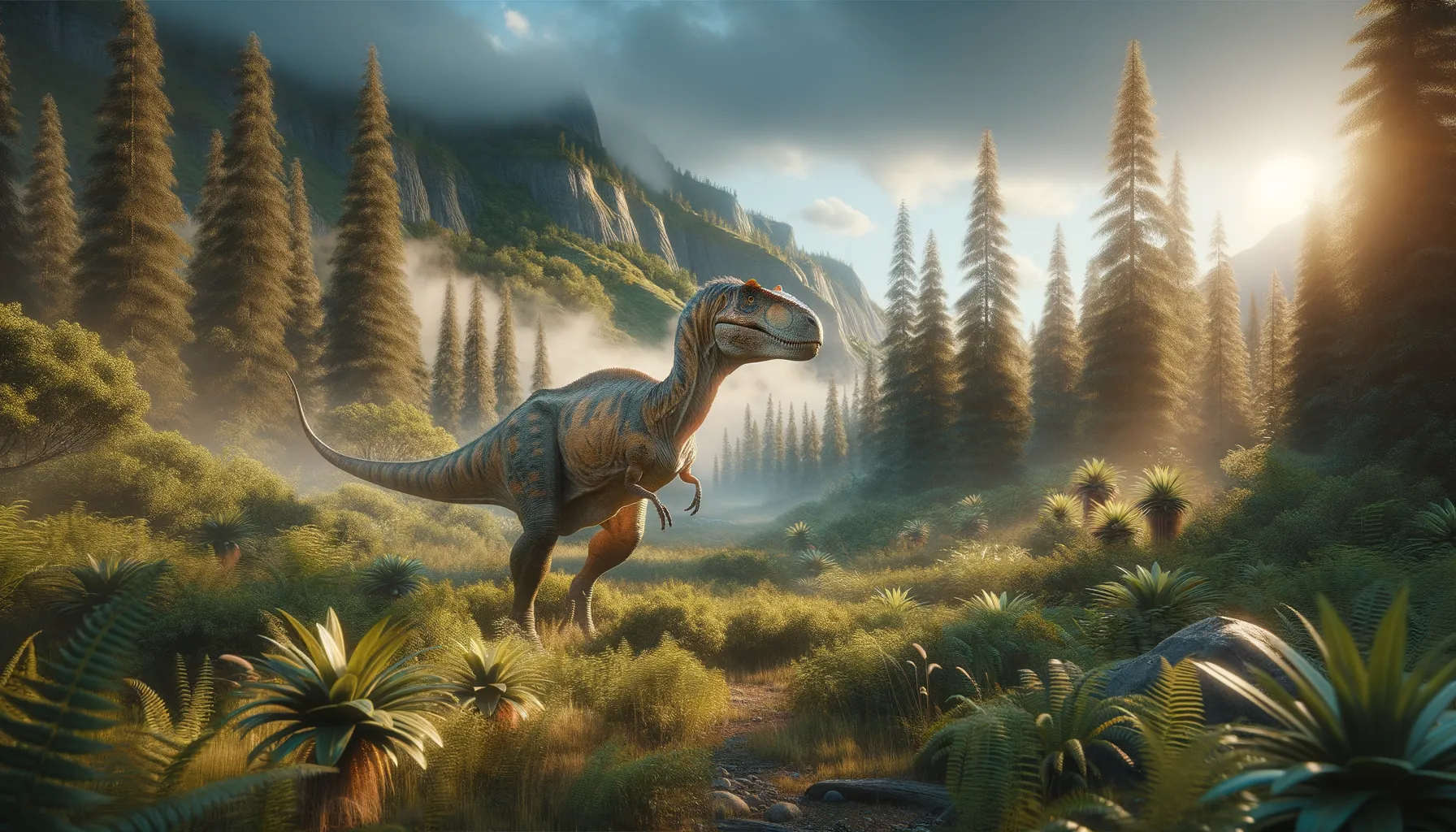
Coloradisaurus
A gentle giant of the Jurassic era.
Period
Jurassic
Length
Approximately 4 meters long.
Height
Reaching up to 1.5 meters at the hips.
Weight
About 200 kilograms.
Coloradisaurus was a small to medium-sized plant-eating dinosaur that roamed the earth during the late Jurassic period. It was part of the sauropodomorph group, known for their long necks and tails. This dinosaur was relatively lightweight compared to others in its group, making it more agile in foraging for food. Its fossils have been crucial in understanding the diversity of sauropodomorph dinosaurs during this time.
Diet
Coloradisaurus was a herbivore, feeding on plants available during its time. Its diet likely included ferns, cycads, and other prehistoric vegetation that grew in its habitat.
Hunting
As a herbivore, Coloradisaurus did not hunt. Instead, it foraged for plants, using its long neck to reach vegetation that was high or low. This adaptation allowed it to access a variety of food sources.
Environmental challenges
Coloradisaurus faced challenges such as drastic climate changes, which affected the availability of food. The shifting conditions of the Jurassic period required this dinosaur to adapt to changes in plant life. Additionally, it had to contend with potential predators that shared its environment.
Speed
Relatively slow-moving due to its size.
Lifespan
Estimated to be around 30 years.
First discovery
First discovered in Argentina in the late 1980s.
Fun Facts
- Coloradisaurus lived during the Late Triassic period, around 210 million years ago.
- It was discovered in the Rio Colorado Formation in Argentina, which is how it got its name.
- Coloradisaurus was a relatively small dinosaur, estimated to be about 3 meters (10 feet) in length.
- It was a herbivore, feeding primarily on plants, and had a long neck to help it reach vegetation.
- This dinosaur belonged to the group of early sauropodomorphs, ancestors of the giant sauropods like Brachiosaurus.
- Coloradisaurus likely walked on two legs but could also use all four for stability when feeding.
- Fossils of Coloradisaurus have provided valuable insights into the early evolution of long-necked dinosaurs.
Growth and Development
The growth rate of Coloradisaurus was likely steady, allowing it to reach maturity at a stable pace. Juveniles were vulnerable to predators, but as they grew, their size offered some protection. Its development involved growing a long neck and tail, characteristic of its sauropodomorph lineage.
Habitat
Coloradisaurus inhabited areas that provided ample vegetation and moderate climate. Its environment was likely a mix of forested areas and open plains, offering a rich source of plant life. The area had sufficient water bodies that supported lush growth, ideal for herbivores.
Interaction with other species
As a plant-eater, Coloradisaurus coexisted with various herbivorous and carnivorous dinosaurs. Its primary interactions were with other plant-eaters, possibly competing for food. It had to remain vigilant against predators, which shaped its behavior and movement patterns.
Natural lifespan
Coloradisaurus had a natural lifespan of around 30 years.
Reproduction
Coloradisaurus likely laid eggs, similar to other dinosaurs of its group. It may have nested in concealed areas to protect its eggs from predators. Successful reproduction required guarding the nest until the eggs hatched, with the young quickly growing to reduce vulnerability.
Social behaviour
Coloradisaurus might have lived in small herds, offering protection and social interaction. Group living could help in food foraging and alerting against threats. Its social behavior might have included communication through vocalizations or body language.
Fossil locations
Fossils of Coloradisaurus have been found primarily in Argentina, providing insights into its distribution in South America during the Jurassic period. These fossil sites have offered significant information on the dinosaur's anatomy and its environment, contributing to a better understanding of sauropodomorph evolution.
